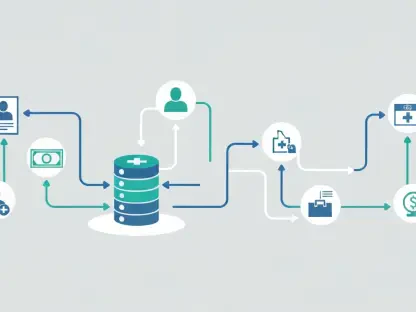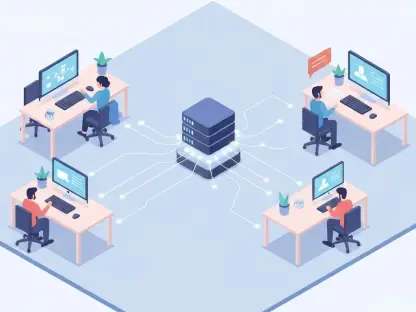When software ships, everyone breathes a sigh of relief. The code runs, the tests passed, and the deployment succeeded. But here’s the uncomfortable truth: in today’s high-velocity development environments, “code complete” is no longer the milestone everyone thinks it is.
Instead of “Is the code done?” you ought to be asking, “Is the product better because of it?”
Software development has never been faster across teams, tools, and timelines. Yet speed often hides the cracks beneath misaligned requirements, hidden tech debt, brittle rituals, and features that work technically but fail contextually.
In this piece, you’ll unpack what’s still being missed after “code complete” and how high-performing teams are shifting their definition of done in a world shaped by AI, and everything in between.
Why ‘done’ No Longer Means Delivered
In traditional development cycles, “done” meant the code merged, tests passed, and the ticket closed. But in the world of continuous delivery, that definition has outlived its usefulness.
Continuous integration/continuous deployment pipelines automate handoffs, feature flags allow partial rollouts, and monitoring platforms feed back real-time insights. On paper, it’s never been easier to ship. But these efficiencies have created a new kind of problem: tunnel vision that prizes speed over impact.
So what’s actually going wrong after the code is done?
Shipping Features Instead of Solving Problems
Feature factories are alive and well. In many organizations, success still gets tallied by the number of features shipped, not whether those features solved a user’s pain.
The root cause? Poor problem framing.
When vague requirements are turned into tickets, developers are left shooting in the dark. When progress is measured by story points and burn-down charts, impact takes a back seat to activity.
Product-led teams flip the script. They ask: “What’s the smallest thing we can build that actually solves something?” If that answer’s fuzzy, it’s not build time—it’s discovery time.
But even when you’re solving the right problem, another trap lurks beneath every sprint: the quiet creep of tech debt.
Ignoring Tech Debt in the Name of Speed
Shipping fast is a business edge—until that speed starts costing you more than it saves. Every shortcut taken—every hardcoded hack or duplicated chunk of logic—adds to the invisible debt ledger.
According to Stripe’s Developer Coefficient Report, engineers spend an average of 33% of their time dealing with technical debt, which costs the industry nearly $85 billion annually. That’s over one full day a week cleaning up messes that shouldn’t have existed.
Elite teams prioritize debt on the roadmap. Refactoring isn’t extra work; it’s foundational work. Speaking of foundations, the tools your teams build on can’t do the work for you, but they sure can distract you from what matters.
Mistaking Tooling for Process Maturity
Modern dev teams have killer stacks—GitHub, Jira, Notion, Slack, CI/CD, and observability—but tools don’t make a team mature.
The issue isn’t the stack, it’s the strategy. A Jira board can streamline Agile or strangle it, and a continuous integration pipeline can build resilience or mask chaos.
The question is: what decisions are your tools actually supporting? What are you measuring and why?
To level up, teams need to stop mistaking motion for momentum, and that starts with examining how the work gets done and who it’s built for.
Which brings this conversation to the ones doing the building: developers.
Underinvesting in Developer Experience (Devex)
The best code comes from empowered developers, not burned-out ones. Yet, DevEx still gets treated like a luxury item. Be it clunky onboarding or flaky test suites, bad internal tooling wastes time, drains morale, and drives talent out the door.
In a 2025 Developer Experience (DX) Research Lab survey, 62% of developers reported that poor internal tooling was a major obstacle to their work, according to The JetBrains Blog. One in four said it directly influenced their decision to leave their last job.
Developer experience is a competitive advantage, and forward-thinking teams treat it like product work: They invest in docs, platforms, linting, sandboxing, and onboarding because that’s where speed and quality are born.
But all the DevEx in the world won’t help if teams are rowing in different directions.
Assuming Alignment Without Actually Syncing
Cross-functional doesn’t equal cross-aligned. Although product, design, and engineering may be in the same Slack, they often operate on separate timelines and have different understandings of success.
Kickoffs happen. Docs get shared. But context decays fast. And without real alignment, teams end up launching features with mismatched expectations.
That’s when the surprises hit:
“Wait, that’s not what I meant.”
“Why did we build it like that?”
“The metric didn’t move.”
Avoiding this requires more than meetings that lock in alignment across the development lifecycle, such as async walkthroughs, live working sessions, shared metrics, and constant user feedback.
But even when your team is in sync, a new disruptor threatens to throw things off course: AI.
Letting Ai Amplify the Wrong Patterns
Generative AI has undoubtedly changed the game. From Copilot to test generators, AI is accelerating development like never before. But speed without strategy is just faster failure. If your workflow is flawed, AI helps you make the same mistakes faster and at scale.
Leading teams use artificial intelligence not just to code, but to think. They prompt it to surface trade-offs, spot edge cases, and even write more human-readable documents. This begs the question, “Can AI help us build better?” But to answer that honestly, teams need to look inward, not just at tooling or timelines but also at culture.
A Culture Problem, Not Just a Process One
The biggest blocker to better delivery is a brittle culture that rewards speed over substance, skips retros, and punishes failure instead of learning from it.
High-performing teams look different. They share traits like:
Psychological safety to challenge deadlines and scope.
Early-stage collaboration across engineering, product, and design.
Real feedback loops from end users.
A bias for reflection.
Culture is the glue that holds processes together. Without it, even the best tools will buckle. And that’s exactly why high-performing teams treat “code complete” as a checkpoint, not the end of the road.
What the Best Teams Do Differently
Elite teams don’t see code as mid-race; they:
Redefine ‘done’: Don’t stop at merging. Stop at meaningful impact.
Integrate deeply: Product, engineering, design—they’re in the room together from idea to iteration.
Run feature post-mortems: Not just “did it deploy?” but “did it deliver?”
Automate with purpose: Continuous integration/continuous deployment pipelines aren’t just throughput, but safety, test coverage, and resilience.
Protect developer experience: Developer time is your most precious asset. Treat it that way.
And most importantly, they build with the end user in mind, not just the internal deadline.
Done Isn’t the End, but the Checkpoint
In software, there is no final “done.” There are just moments in motion. Every commit changes context, every deploy rewrites reality, and every release affects the user in unexpected ways.
This article makes one core argument: Treating “code complete” as the finish line is a dangerous illusion. To break free, you need a wider definition of success—one that includes alignment, empathy, iteration, and impact.
Because in the end, what matters isn’t how fast you wrote the code. But whether that code actually made something better. And that’s a question worth asking—especially after you hit “deploy.”









